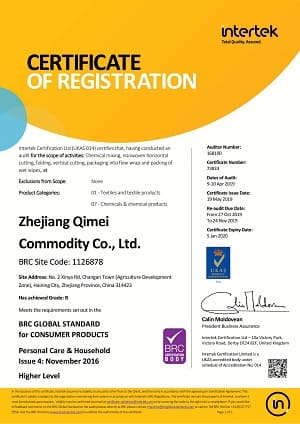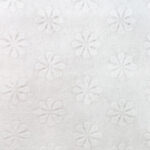Spunlace onwoven Fabric Type: Polyester,Poly -Viscose Blend material, Bamboo Fiber, Wood Pulp(Flushable), Cotton or Soy Fiber(Biodegradable)
Flat or Textured( Your Own LOGO is available)
Grammage: 30-80gsm
1/10/30/80/100/120/160 pcs/pack
Generally, screen wipes come in a range of sizes, from small individual wipes to larger wipes that can be used multiple times.
Small individual screen wipes are often designed to be used once and then discarded. They are typically small enough to be carried in a purse, bag, or pocket for on-the-go cleaning and may be packaged in small sachets or resealable packs.
Larger screen wipes may be designed for multiple uses and may come in canisters or tubs. These wipes are often larger in size and may be designed to clean larger screens, such as those found on televisions or computer monitors.
1. Plastic resealable bag: This is the most common type of wet wipe packaging. It is made of plastic and has a resealable strip on top to keep the wipes fresh and moist.
2. Flip-top lid container: This type of packaging consists of a plastic container with a flip-top lid that can be opened and closed to access the wipes.
3. Soft pack with plastic flip-top lid: Similar to the flip-top lid container, this packaging comes in a soft pack and has a plastic flip-top lid for easy access.
4. Pop-up dispenser: This type of packaging features a pop-up dispensing mechanism that pulls out one wipe at a time.
5. Travel pack: A small packaging designed for on-the-go use, it often comes with a plastic snap closure.
6. Single-use packaging: These wet wipes come in small, sealed packets which are convenient for travel or outdoor activities.
7. Refill bag: This larger size packaging is designed to refill other wet wipe containers, and usually has a resealable opening.
Isopropyl alcohol: This is a common cleaning agent that is effective at removing dirt, fingerprints, and other debris from electronic screens. It evaporates quickly, which helps to prevent streaks or smudges on the screen.
Water: Water is often used as a solvent in screen wipe formulations.
Surfactants: Surfactants are compounds that help to break down and remove dirt and oil from the screen. They can also help to prevent streaks and improve the cleaning performance of the wipe.
Preservatives: Preservatives are used to prevent the growth of bacteria and other microorganisms in the wipe. This helps to extend the shelf life of the product.
Fragrances: Some screen wipes may contain fragrances to provide a pleasant scent or mask unpleasant odors.
ISO 9001: This is a quality management system certification that ensures that the manufacturing process for screen wipes meets certain quality standards.
ISO 14001: This is an environmental management system certification that ensures that the manufacturing process for screen wipes meets certain environmental standards.
REACH: This is a European Union regulation that requires manufacturers to register, evaluate, authorize, and restrict the use of chemicals in products. Screen wipes may contain chemicals, such as cleaning agents, that are subject to REACH regulations.
RoHS: This is a European Union directive that restricts the use of certain hazardous substances in electrical and electronic equipment. Screen wipes may be used to clean electronic screens, so compliance with RoHS regulations may be relevant.
CE Marking: This is a certification that indicates that a product meets certain health, safety, and environmental requirements and can be sold within the European Economic Area.
UL Listing: This is a certification from Underwriters Laboratories that indicates that a product has been tested and meets certain safety standards.
ASTM International standards: ASTM International develops and publishes voluntary consensus technical standards for a wide range of products, including wipes. Compliance with relevant ASTM International standards may be relevant for the manufacturing of screen wipes.












